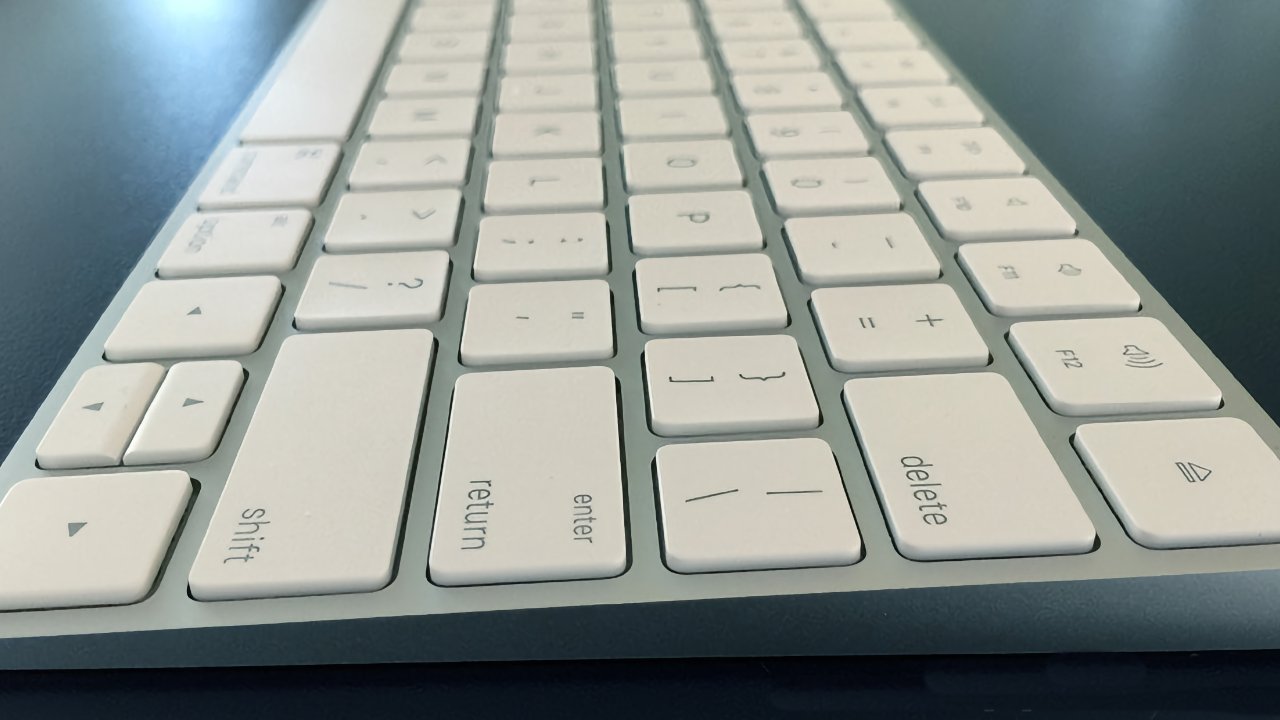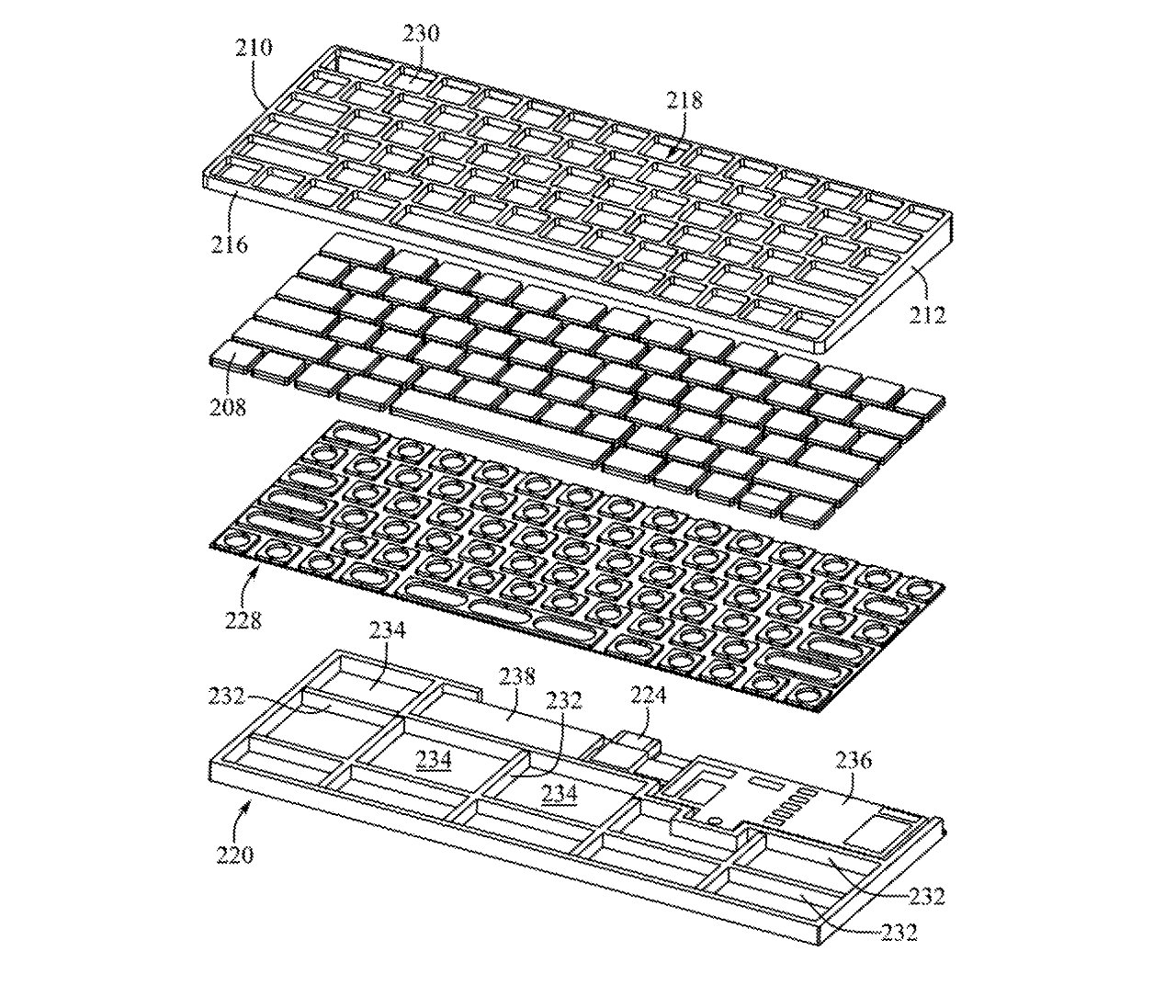Apple looking to the past, working on how to put a Mac in a keyboard
Apple's Magic Keyboard may one day become more magical, and possibly a little thicker, as the company is working on ways to include an entire Mac within it.

made a big of thing of how the little Mac mini was a BYODKM, or Bring Your Own Display, Keyboard, and Mouse, device. Now it seems Apple is looking at cutting that down even further, to when all you need to bring is your own display.
"Computer in an input device," is a newly-granted patent that proposes an entire Mac that's the size of a keyboard. And would also be a keyboard.
Reminiscent of countless 1980s computers like the Apple II, Vic 20, and the Sinclair QL, a computer made following this patent would look like it was just a keyboard. It would be bigger or taller than a current Apple Magic Keyboard, but perhaps not by all that much.
"A strong demand for portable computing devices which also deliver high performance," says the patent, "has driven miniaturization and reduction in size of the once bulky computing components used to power and drive the devices."
"Components, such as processors, batteries, memory, integrated circuits, and the like," it continues, "are now being manufactured within smaller footprints to provide lightweight and thin portable computing devices."
Apple argues that therefore "further tailoring of housing designs, shapes, and configurations to provide additional or enhanced device functionality" is possible - and desirable.
That's really the thrust of the entire patent, as the majority of its more 130,000 words is detailing methods for ventilating such a keyboard to keep components cool.
There are, though, multiple references to making such a device even more portable. For one instance, Apple says that the "computing device can be foldable about an axis."
And for another, "where a user might desire the device... to have wireless internet connectivity, [it[ can include a cellular antenna."

Detail from the patent showing the whole stack from keys at the top to computer components at the bottom
That comes in a section that is really concerned the space available for components, more than it is about what the specific components would be. It does argue what they do not have to be, though: its own display.
"This device configuration can allow a user to carry a single computing device," says Apple, "that can provide a desktop computing experience at any location having one or more computer monitors."
This patent is credited to three inventors, including Brett W. Degner. His previous related work includes a patent concerning making an iMac from one sheet of glass.
Read on AppleInsider

Comments
EDIT: Yes I know laptops are essentially the same thing. Somehow users seem to treat laptops better than desktop keyboards. Not sure why, but over the years I replaced a lot of keyboards that got destroyed by users in various creative ways. Wasn't nearly as much of a problem with a laptop.
There are, though, multiple references to making such a device even more portable. For one instance, Apple says that the "computing device can be foldable about an axis."
Sorry, Apple this had been done before. But wait... those patents have probably expired. Even so... come on Tim Cook, your guys can do better than this.
We can also talk about the PC-on-an-HDMI-stick form factor PCs.
I'm all for alternative form factor computers, especially if you have a really nice HDTV or monitor with a spare HDMI port. Having a full PC with a real browser, email, camera/mic, and productivity apps available with a 10-foot interface (sofa compatible) is a rather pleasant way to utilize an open HDMI port on a high res TV. I'm currently using a Mac mini, an Intel NUC, and a Raspberry Pi 4B in these type of sofa-based (or La-Z-Boy) applications. Works great.
A: a keyboard, maybe with a "whole" computer built into it.
In such a setup, which of the 2 devices would need the bigger battery? The "keymac." Goggles would be in a lower power, display-only mode.
Hmmmmm.